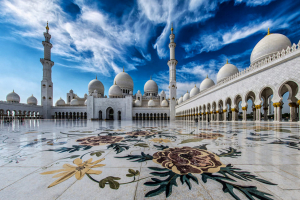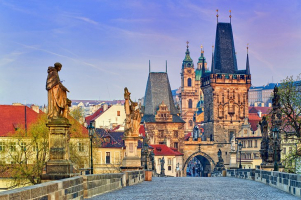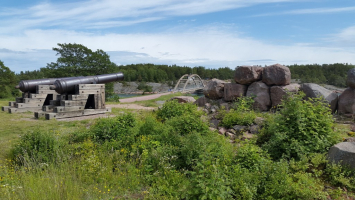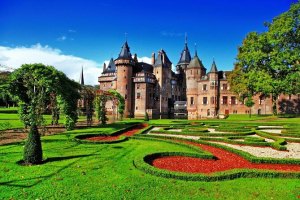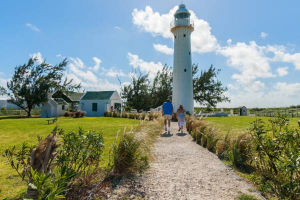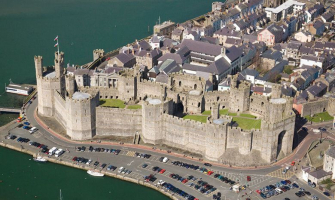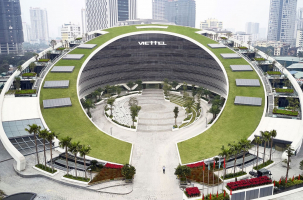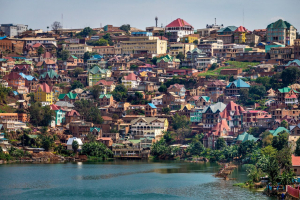Top 10 Most Beautiful Historical Sites in the United States
Although the United States of America may not have a long history compared to other countries, it does have a fascinating past. If you're interested by ... read more...American history but don't remember sitting in a classroom to study about it, know that your learning days aren't over. Here is a list of the most beautiful historical sites in the United States for history lovers to visit.
-
The brick seacoast fortification of Fort Point is located on the southern side of the Golden Gate near the San Francisco Bay entrance. It's also the name of the rocky outcropping on which the fort and the southern entrance to the Golden Gate Bridge were built. The United States Army constructed the fort immediately before the American Civil War to defend San Francisco Bay against hostile vessels. The fort is presently protected as part of the Golden Gate National Recreation Area as Fort Point National Historic Site, a United States National Historic Site maintained by the National Park Service. It is one of the most beautiful historical sites in the United States and is currently well-known as a tourist attraction due to its proximity to the Golden Gate Bridge.
The American Institute of Architects suggested in 1926 that the fort be preserved because of its remarkable military architecture. Due to a lack of funds, the concepts sat dormant. The fort was originally planned to be demolished as part of the construction of the Golden Gate Bridge in the 1930s, but Chief Engineer Joseph Strauss rebuilt the bridge to save the fort. "While the old fort no longer serves a military purpose," Strauss stated, "it remains a wonderful example of mason's skill... It should be conserved and repaired as a national monument." The fort is located precisely beneath an arch that supports the highway on the bridge's southern approach. Following WWII, preservation efforts were resurrected. President Richard Nixon signed a measure designating Fort Point National Historic Site on October 16, 1970.
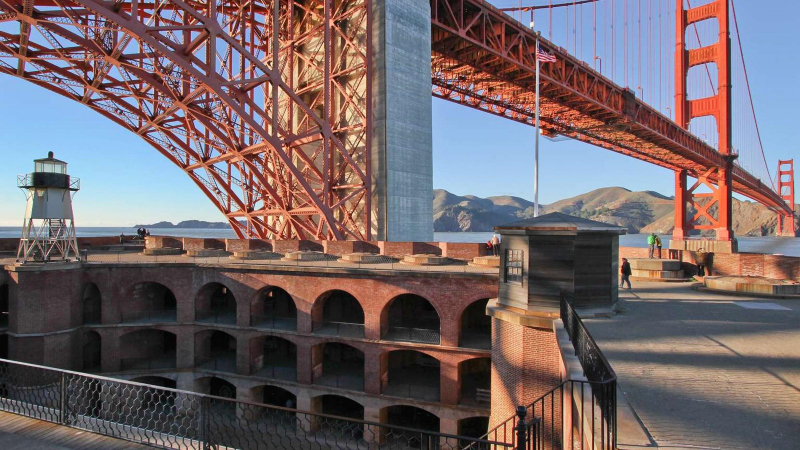
Source: nps.gov 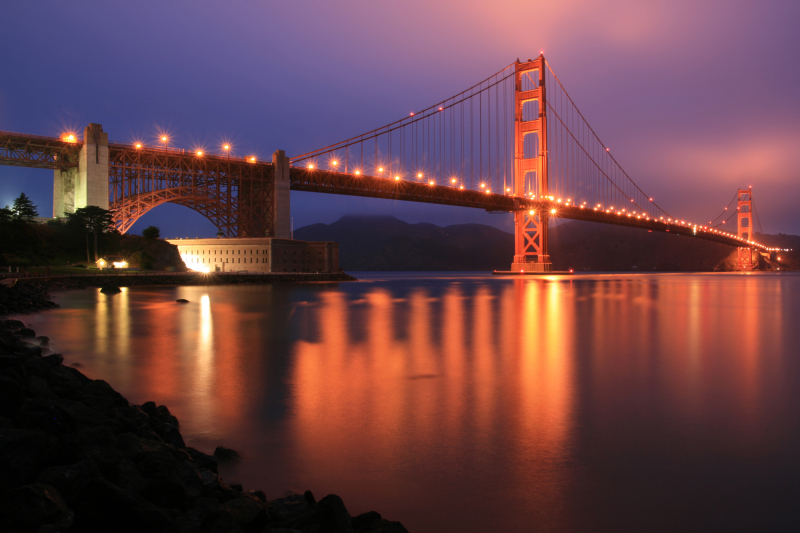
Source: wikipedia -
San Juan National Historic Site is one of the National Park Service's 400+ sites. Castillo San Felipe del Morro, Castillo San Cristóbal, the majority of the city walls, the San Juan Gate, and Fort San Juan de la Cruz are all located close to the bay's entrance. Our goal is to protect natural and cultural assets like this one for current and future generations to enjoy.
Puerto Rico is the easternmost of the Caribbean's Greater Antilles and the first significant island with freshwater, food, shelter, and supplies like wood that sailors arriving by sea from Europe could access. But there was another factor that made Puerto Rico much more vital to Spain. Shortly after arriving, the Spaniards learned that the larger regions of Mexico, Central America, and South America were rich in gold, silver, and diamonds. Spain wants the wealth. San Juan's defensive defenses made Puerto Rico the "front door" to the vast Spanish territories in the New World.
Because of the strategically positioned island of Puerto Rico, Spain swiftly became a great international power in the 16th century. That is why Spain has spent more than 250 years protecting this strategic site. It's no surprise that Spain fought to keep Puerto Rico under its hands for over 400 years!
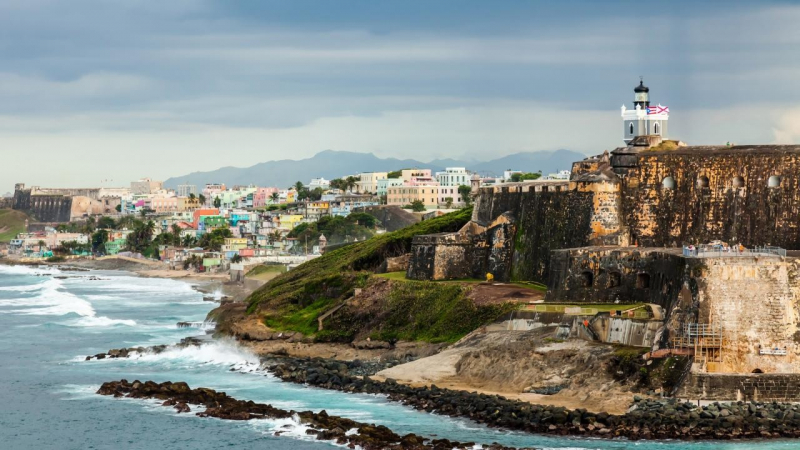
Source: gousa.in 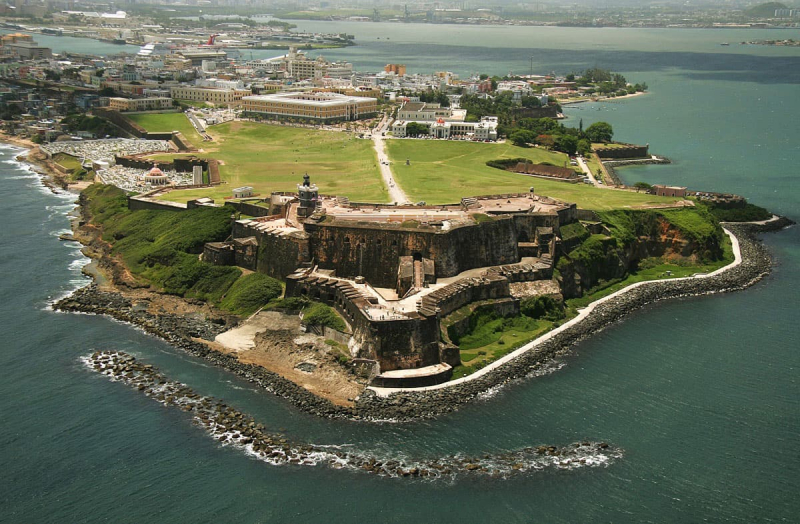
Source: nlprod.com -
Fort Vancouver National Historic Site is located in the states of Washington and Oregon. The National Historic Site is divided into two components, one of which is located on the site of Fort Vancouver in modern-day Vancouver, Washington, and the other of which is located in Oregon City, Oregon, and is the old house of John McLoughlin. In the 1940s, the two sites were accorded distinct national historic designations. In 1961, the Fort Vancouver unit was recognized as a National Historic Site, and in 2003, it was merged with the McLoughlin House to form a new unit.
When the US Army Reserve formally deactivated the post following its uninterrupted possession since 1849, parts of the Vancouver Barracks were given to the National Park Service in 2012. Although most of the buildings are closed to the public, there are some outdoor exhibitions.
The National Park Service has been rehabilitating and refurbishing the barracks buildings to be utilized as mixed-use structures since the Post to Park transfer in 2012. Other governmental departments, community groups, and private enterprises are expected to occupy these buildings in the future. In addition to a potential museum space for the National Park Service's Vancouver Barracks, the neighborhood is slated to include a community center, office buildings, restaurants, and shops. The Gifford Pinchot National Forest relocated its headquarters and administrative activities to one of the Vancouver Barracks' restored double infantry barracks buildings in 2016. Together with the National Park Service, the US Forest Service manages the visitor center at Fort Vancouver National Historic Site.
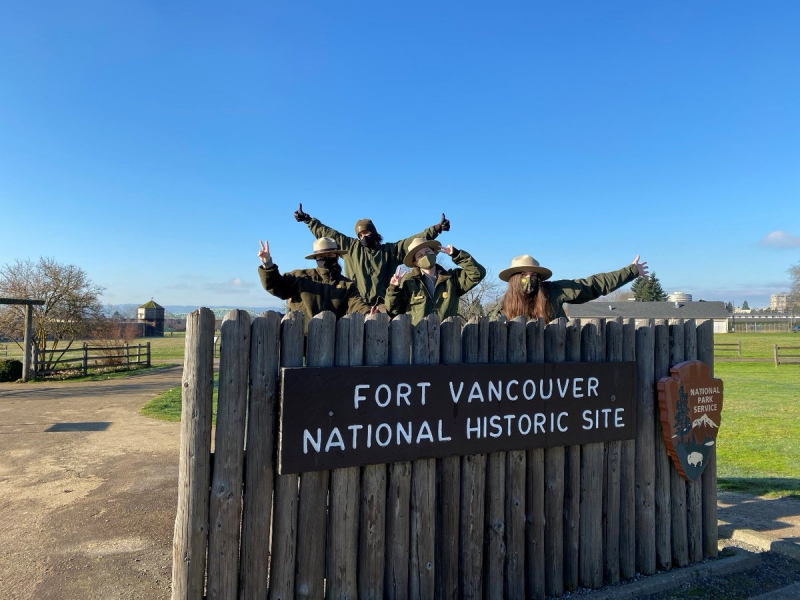
Source: FtVancouverNPS 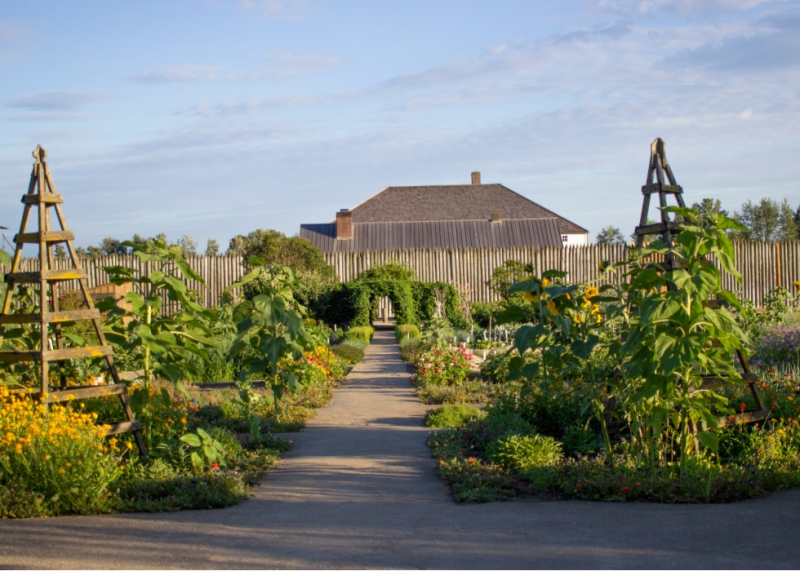
Source: stacker.com -
Ford's Theatre, located in Washington, D.C., first opened its doors in August 1863. It is notable for being the location of United States President Abraham Lincoln's assassination on April 14, 1865. In 1932, the building was converted into a museum, and in 1968, it was refurbished and reopened as a theater. A connected Center for Education and Leadership museum opened next to Petersen House on February 12, 2012.
The Oldroyd Collection of Lincolniana is housed in the Ford's Theatre Museum, which is located under the theater. The Museum is managed in collaboration with the National Park Service and the private non-profit Ford's Theatre Society and was recently refurbished for a July 2009 reopening. Several artifacts linked to the assassination are included in the collection, including the Derringer pistol used in the shooting, Booth's diary, and the actual door of Lincoln's theatrical box. A number of Lincoln's personal belongings, his coat, various Lincoln monuments, and numerous huge pictures of the President are also on show inside the museum. The Ford's Theatre Museum has the President's blood-stained pillow from his deathbed.
The newly rebuilt museum covers Lincoln's entry into Washington, his presidential cabinet, White House family life, and his position as orator and emancipator, in addition to the assassination conspiracy. The museum also has displays regarding Civil War milestones and generals, as well as the history of the structure as a theater. The rocking chair in which Lincoln sat is currently on exhibit in Dearborn, Michigan's Henry Ford Museum.
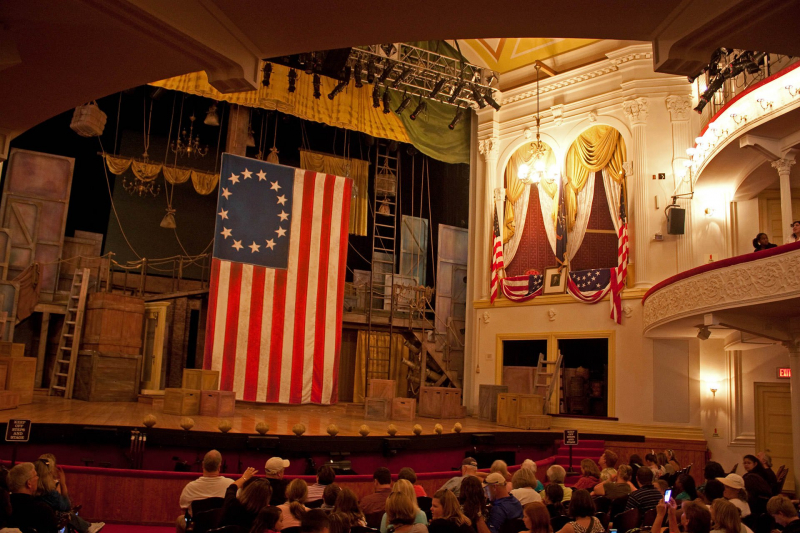
Source: findyourpark 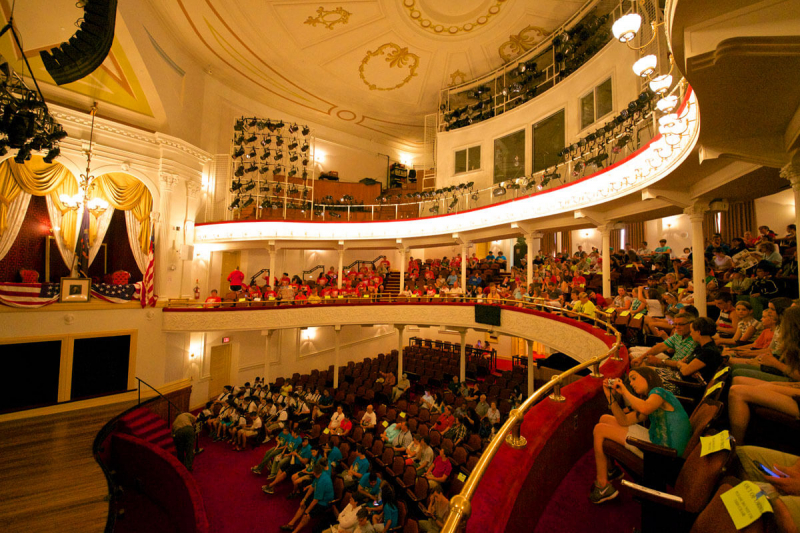
Source: trolleytours -
This National Park, which is mostly in the Beacon Hill district, has fourteen separate sites, including dwellings, memorials, schools, and churches. Before the Civil War, the north slope of Beacon Hill housed more than half of the city's 2,000 African Americans, contributing to the neighborhood's status as a significant station on the Underground Railroad. It has the country's biggest collection of pre-Civil War black-owned homes. In 1980, these independent sites were combined to become a National Historic Site, with a focus on the political, social, and educational aspects of free black life before the Civil War. Tours are led by park rangers and begin at the 54th Regiment Memorial in Boston Common. While the majority of the structures are closed to the public, the Museum of African American History manages two of them as museums, the African Meeting House and the Abiel Smith School, in collaboration with the National Park Service.
The ridge of Beacon Slope runs east-west across the neighborhood's heart, with the hill sharply descending to the north and south. The rectilinear streets are built out in a grid arrangement. In 1980, the National Register of Historic Places designated the Boston African American National Historic Site as a district, and most of the buildings are contributing resources of the Beacon Hill National Register District, with the African Meeting House and the William C. Nell House being designated as National Historic Landmarks in 1974 and 1976, respectively.
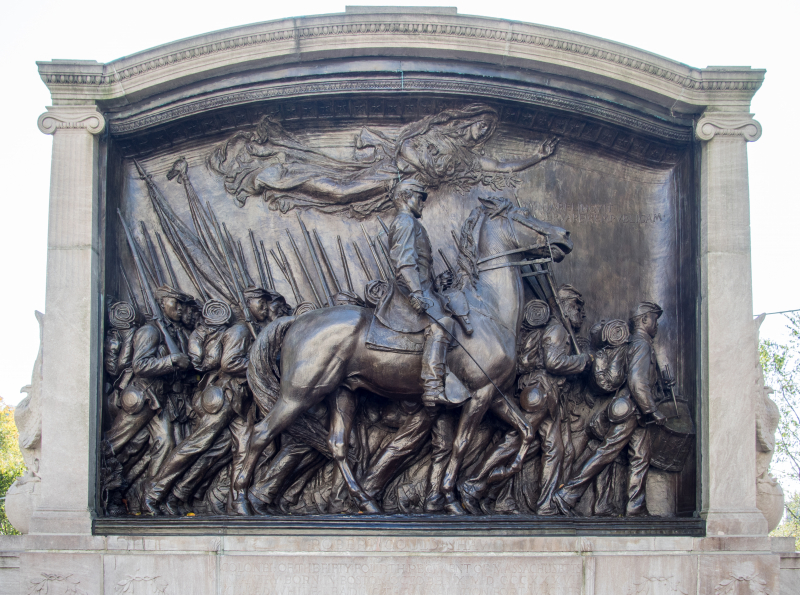
Source: wikimedia 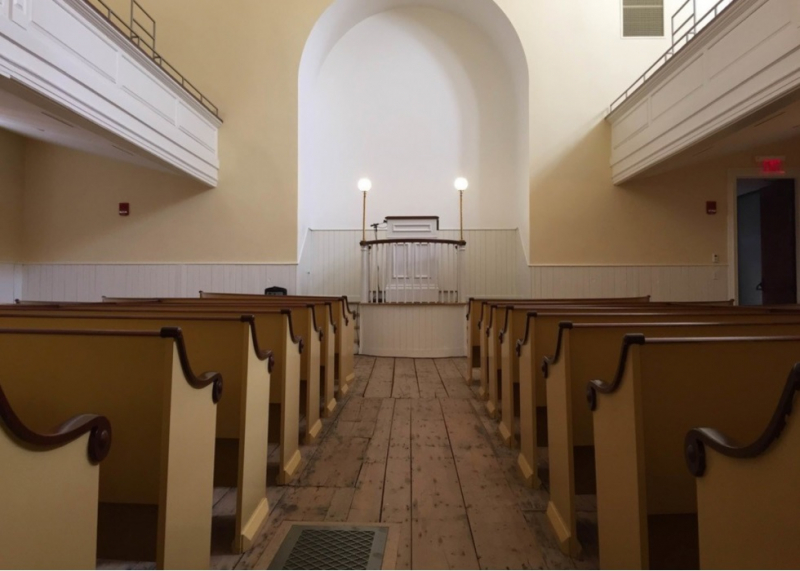
Source: stacker.com -
The Salem Maritime National Historic Site, one of the most beautiful historical sites in the United States, is a National Historic Site in Salem, Massachusetts, consisting of 12 historic houses, one replica tall ship, and approximately 9 acres (36,000 m2) of land along Salem Harbor's coastline. The first National Historic Site in the United States was created at Salem Maritime (March 17, 1938). It examines the Triangle Commerce in cotton, rum, sugar, and slaves during the colonial era, as well as for privateering during the American Revolution and worldwide maritime trade with the Far East following independence. Both the National Historic Site and a Regional Visitor Center in downtown Salem are managed by the National Park Service. The National Park Service is a division of the Department of the Interior of the United States of America.
The National Park Service, which oversees the Salem Maritime National Historic Site, provided facts and statistics for 2012 in 2014, revealing that 756,038 people visited Salem in 2012, spending an estimated $40 million. In 2016, the National Park Service celebrated its 100th birthday.
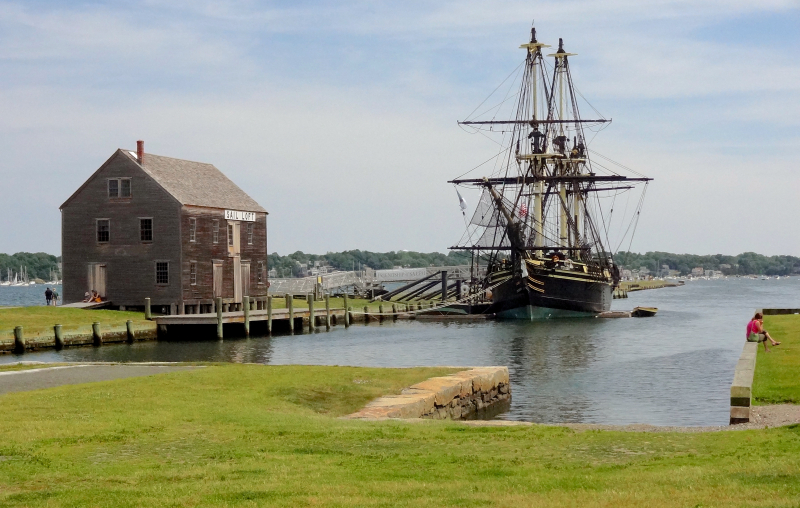
Source: wikimedia 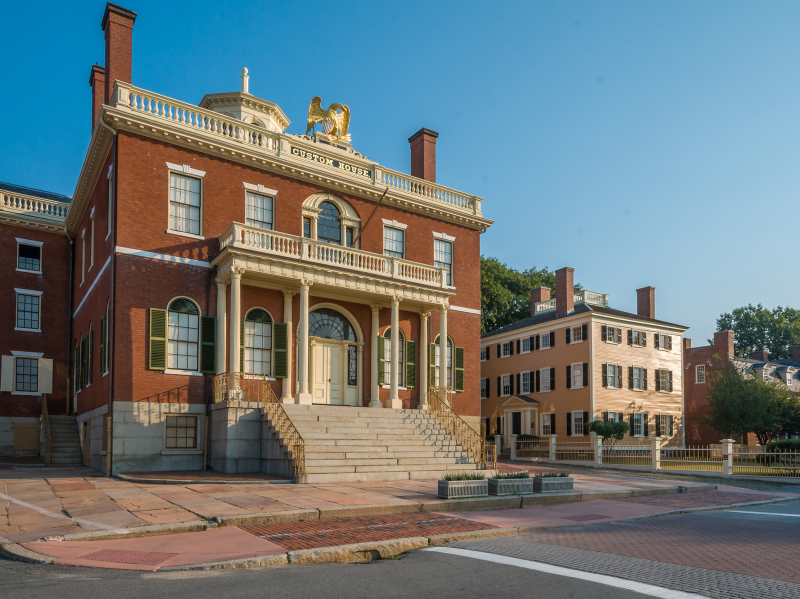
Source: wikimedia -
The Vanderbilt Mansion National Historic Site in Hyde Park, New York, is a historic home museum. In 1940, it was designated as a National Historic Landmark. The National Park Service owns and operates it.
Frederick William Vanderbilt and his wife Louise Holmes Anthony owned multiple houses, including Hyde Park, which was one of them. McKim, Mead & White, the famous architectural company, created the 54-room Vanderbilt home. Between 1896 and 1899, the building was completed. The home is built in the Beaux-Arts style of architecture. The interiors are American Renaissance archetypes, combining European architectural salvage, antiques, and superb period reconstructions in a variety of historical styles. The site encompasses 211 acres (85 ha) of the original bigger property (originally over 600 acres), which includes groomed lawns, formal gardens, trees, and various auxiliary buildings and is perched on a hill overlooking the Hudson River.
The Italian gardens are separate from the home and feature traditional Italian formal features. This meant that if you drew a line across the middle of the beds, either horizontally or vertically, one side of the line would mirror the other. The number of layers in these formal gardens varied depending on the variety of plants. Each level was unique. Frederick added the rose garden, which had about 2000 vintage rose plants as well as other varieties of roses.
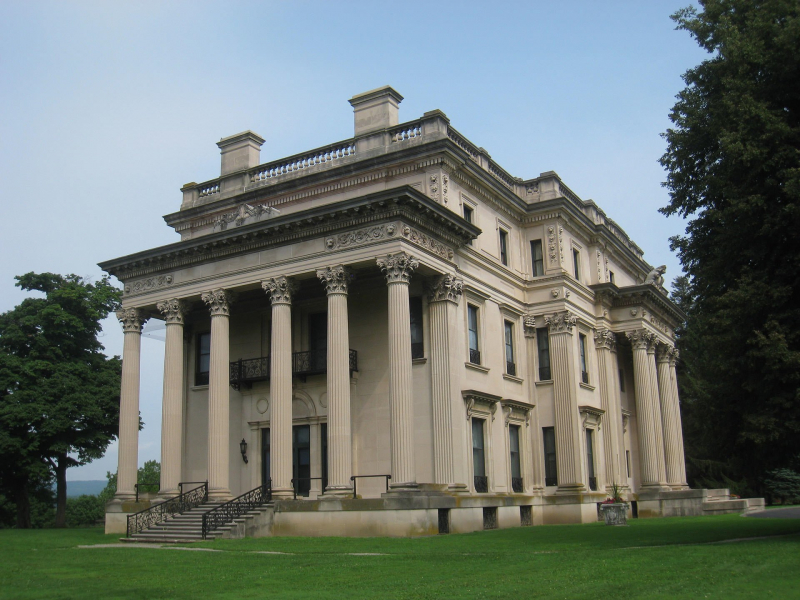
Source: flickr.com 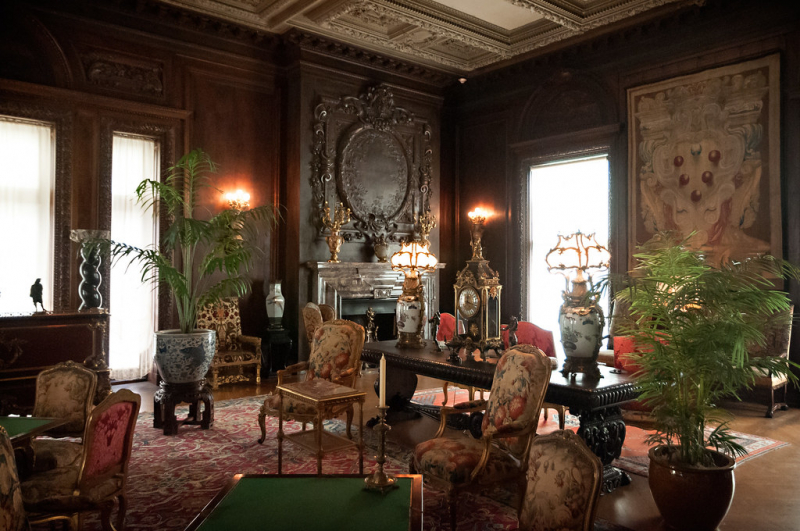
Source: nationalparks.org -
The location of Roanoke Colony, the earliest English colony in the modern United States, is preserved at Fort Raleigh National Historic Site. The historic site is located along US Highway 64 on Roanoke Island, North Carolina, about 3 miles (4.8 kilometers) north of Manteo. Exhibits covering the history of English voyages and colonies, the Roanoke Colony, the island's Civil War history, and the Freedmen's Colony may be found at the visitor center's museum.
The Elizabethan Gardens, operated by the Garden Club of North Carolina, were constructed as a tribute to the original colonists and as an example of a period garden inside the historic site. The grounds are more than 10 acres (4.0 hectares) in size and contain a Tudor gatehouse replica. The gardens have their own admission price.
On 10.5 acres of picturesque waterfront land, over 500 varieties of plants are skillfully cultivated. This lovely Outer Banks attraction was erected to commemorate Queen Elizabeth I in the mid-twentieth century. It's like stepping into a time machine when you enter the Elizabethan Gardens. The Renaissance sculptures buried throughout the garden, as well as the complex Elizabethan-style structures, will delight history fans and horticulturists alike. The garden is open every day of the year and hosts seasonal activities including educational tours in the summer and Christmas light displays in the winter. Because of its romantic ambiance and gorgeous vistas, the attraction is also a favorite Outer Banks wedding destination.
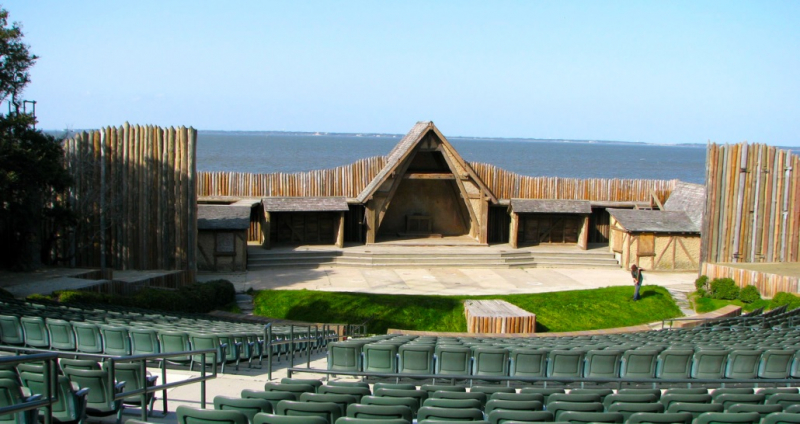
Source: groupiiimgt 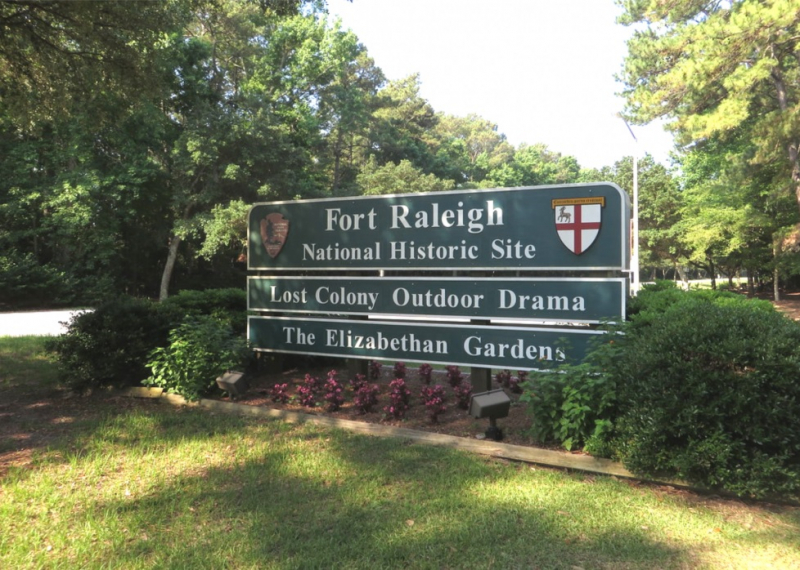
Source: stacker.com -
Public Law 92-128 created the Lincoln Home National Historic Site in Springfield, Illinois, in 1971. (85 Stat. 347). The Abraham Lincoln Home National Historic Site preserves and explains the home where he and his family lived from 1844 until 1861.
The Lincoln Home is one of 14 residences preserved at the Lincoln Home National Historic Site, which also includes the Lincoln Home. The Lincoln Home neighborhood was diversified, with residents from a wide range of vocations, as well as social and economic classes. The National Park Service aims to reproduce a vivid sense of the Lincoln family's interaction with their neighbors and the greater Springfield community via neighborhood preservation and interpretive programs, increasing visitors' experience at Lincoln Home National Historic Site.
Lincoln's residence became a significant political symbol as his popularity increased. Presidents and presidential contenders still make well-publicized visits to the White House. Exhibits, a park film, and guided tours of the Lincoln Home are among the tourist activities provided at Lincoln Home National Historic Site.
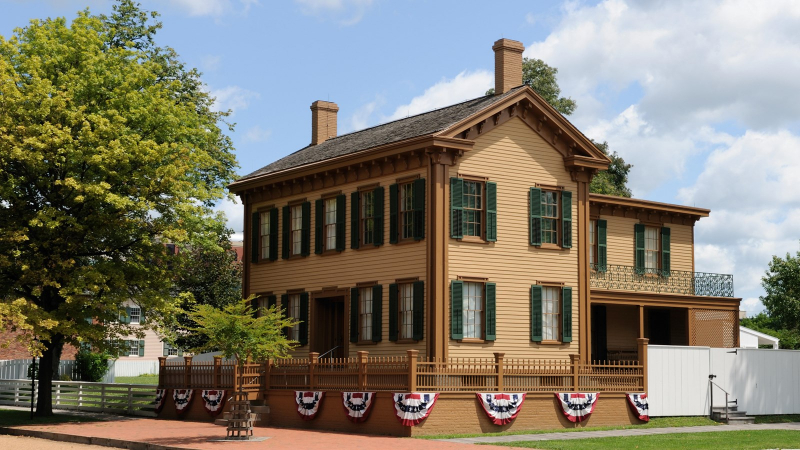
Source: nps.gov 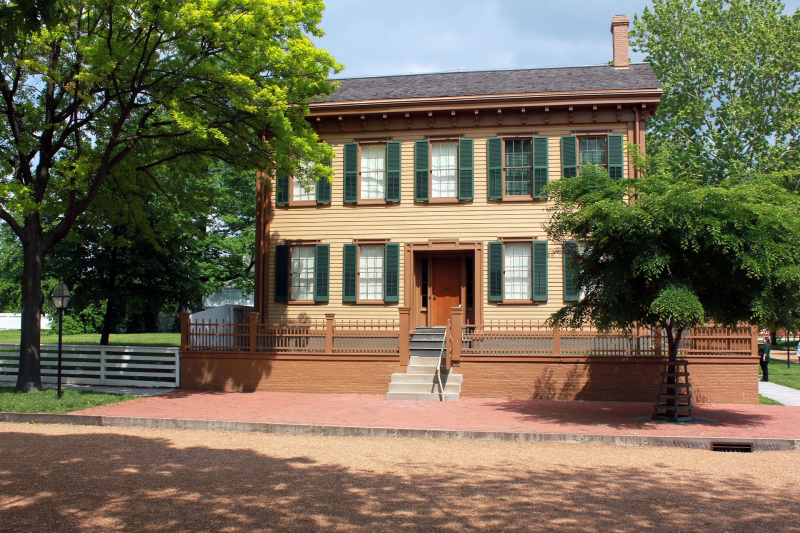
Source: buyoya.com -
The Allegheny Portage Railroad was the first railroad built across the Allegheny Mountains in central Pennsylvania, United States, and it served as the first transportation infrastructure connecting the midwest to the eastern seaboard across the Allegheny Front barrier range from 1834 to 1854. The system was primarily utilized as a portage railway, moving riverboats and barges across the difference between the Ohio and Susquehanna Rivers. It was approximately 36 miles (58 kilometers) long total, with both ends connected to the Pennsylvania Canal. The Allegheny Portage Railroad National Historic Site, managed by the National Park Service, now houses the railroad's ruins.
The railroad used carefully built wheeled barges to travel on a narrow-gauge rail track, elevating the vehicles with steam-powered stationary motors. The railroad's roadbed did not incline steadily upwards but rose in relatively long, saw-toothed stretches of slightly sloped flat terrain suitable for animal-powered towing, interspersed with steep cable railway inclined planes powered by static steam engines, similar to modern ski lift mechanisms.
Near the historic line, the park service runs a visitor center with educational exhibits. The Samuel Lemon House, a bar along the railroad in Cresson that was a popular stop for railroad travelers, is nearby; the National Park Service has transformed it into a historical museum. A section of repaired track, an engine house with exhibitions, a picnic area, and hiking paths are also maintained.
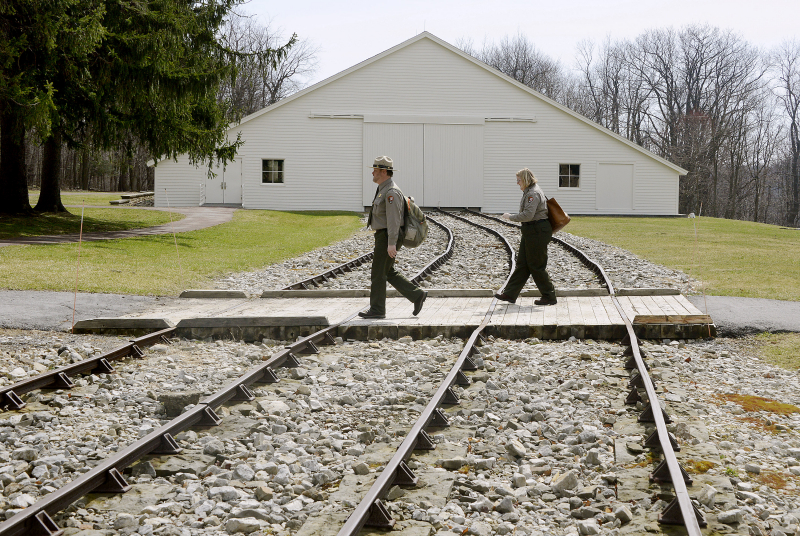
Source: newsinteractive 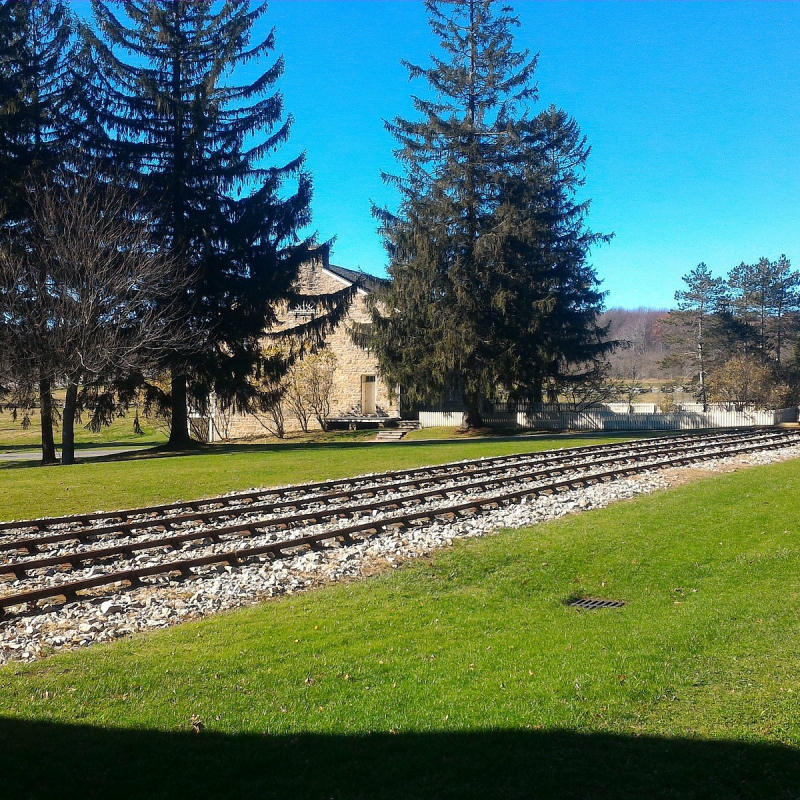
Source: tripadvisor












